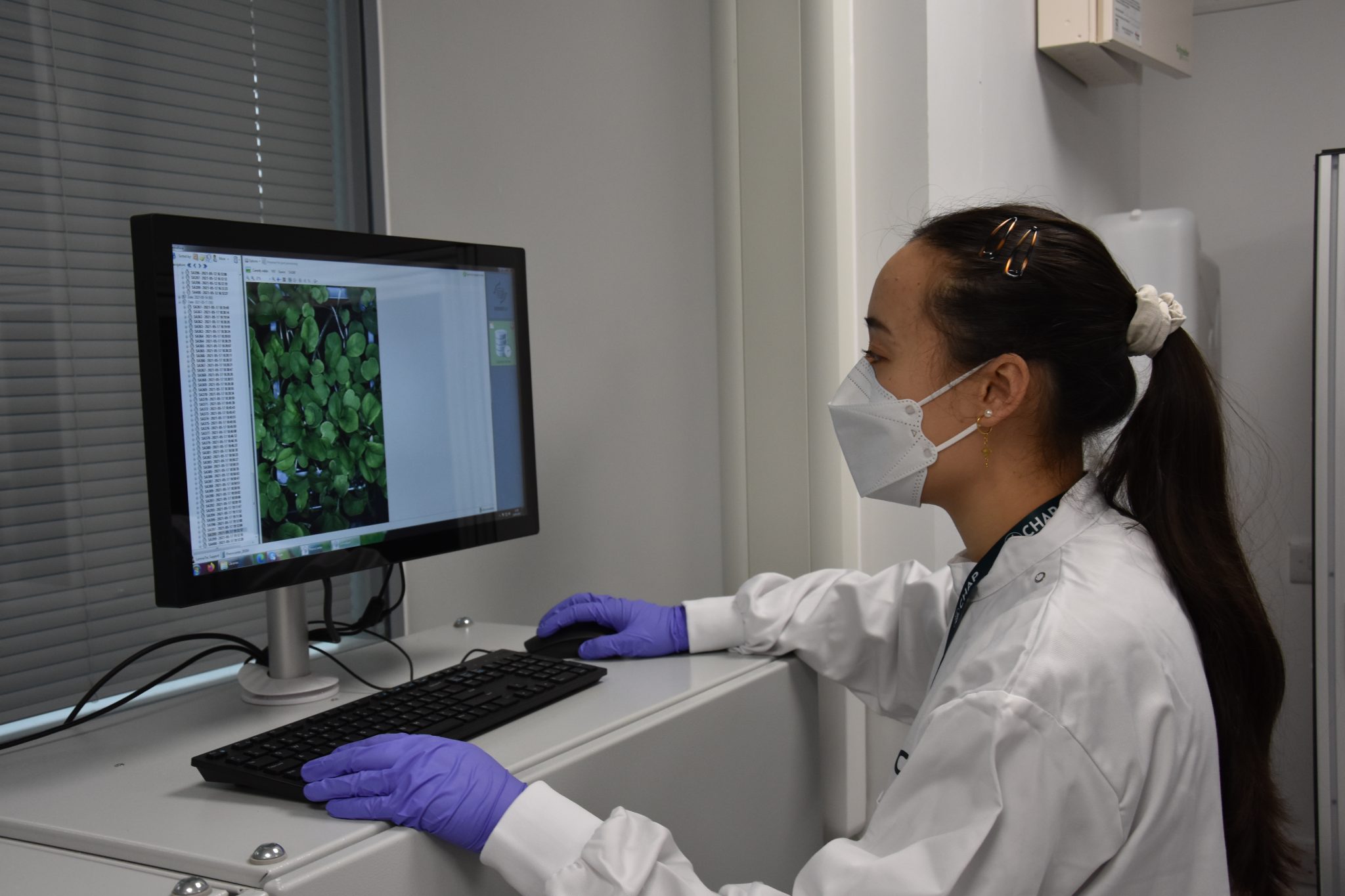The main focus of the Digital Phenotyping Lab is multispectral imaging. This involves measuring the reflectance of different wavelengths of light, beyond what is visible to the naked eye. Therefore, it has a huge advantage as a diagnostic tool that importantly enables non-destructive analysis. We have been using multispectral imaging in a range of different projects and it has been vital for quantifying traits (which replaces manual scoring), species/variety identification and pre-symptomatic disease detection.
The lab’s focus is pretty broad: we cover the phenotyping of crop traits, weeds, pests, and pathogens. We are also interested in testing herbicide, fertiliser, and biostimulant products.
The large range of projects we can undertake is facilitated by our well-equipped lab, technical expertise, access to a network of diverse scientific specialists and world-class controlled environment and glasshouse facilities. It is exciting to explore our labs capabilities and use our equipment for new applications.
We have three main pieces of imaging equipment that are used in different scenarios. Each piece of equipment has different advantages so, depending on the focus of the project, we may choose one over another or we will use them in combination.
1 LemnaTec PhenoCenter
This is a semi-automated imaging system equipped with a robotic arm which can pick up samples and a range of different sensors. It allows you to assess the condition of your crop using the five available sensors. Our sensors include:
- A visible light (VIS) camera, similar to your phone camera. This has more obvious uses such as quantifying leaf colouration.
- A near-infrared (NIR) camera, which is ideal for plant tissue water content determination.
- A fluorescence camera that measures the intensity of fluorescent pigments.
- A 3D laser scanner lets us look into the 3D structure and dimensions of plants.
- A chlorophyll fluorescence camera, which measures photosynthetic efficiency and is therefore an indicator of plant stress.
This range of sensors makes the PhenoCenter an excellent system for studying plant responses due to stress treatments, environmental conditions or genetic differences, as you can generate a comprehensive overview of your samples.
2 VideometerLab
This advanced multispectral imaging system covers wavelengths from ultraviolet (UV) to near-infrared (NIR), so enabling the extraction of additional information that is not visible to the naked eye.
The VideometerLab is best used to look at smaller, static samples. It is also very user-friendly with clear workflows and versatile image analysis tools.
We have used it for the analysis of seeds, fruit, and leaves so far, and it can replace subjective assessments or laborious morphological and chemical analyses. It generates valuable outputs, down to granular level (e.g., per seed). You can train the system to identify, quantify and predict characteristics of your samples, this could include levels of fungal contamination or seed viability.
3 XIMEA cameras
These multispectral cameras cover the VIS (visible) and NIR ranges, which again means they can show things not visible to the naked eye.
The fact that these cameras are portable and image in a snapshot, means they are ideal for imaging moving objects and lab-to-field use. We have found them particularly useful for in-field scenarios, trialling their usefulness in the detection of pests in wheat and oilseed rape fields.
With all the imaging systems mentioned above, there are so many avenues to be explored in terms of projects and focus. It’s always about how far can we take the technology, what else can it show us.
To find out how CHAP, in partnership with Rothamsted Research, can help to take your crop research to another level, go to Digital Phenotyping Lab.
Reach out to the CHAP team to discuss potential project opportunities using our Digital Phenotyping Lab: email us using the enquiries form at the bottom of our homepage.












